15 fun and interesting facts about wolves
15 fun and interesting facts about wolves
Here’s a wolf fact for you: grey wolves are one of the most widely distributed land mammals in the world, but many wolf populations are under serious threat. Because they are found in so many ecosystems and sit at the top of the food chain, the health of wolf populations is a key factor in the ongoing health of our planet.
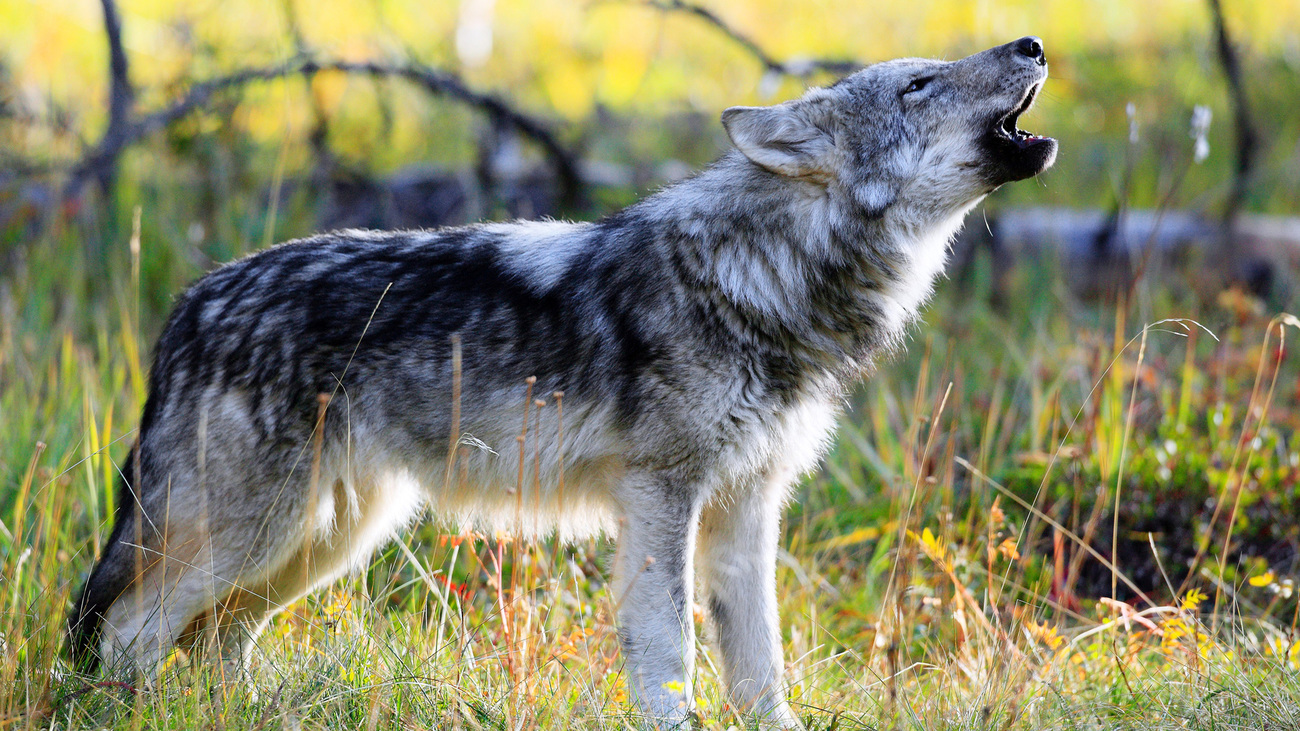
IFAW is a conservation organisation working around the globe to create a better future for both humans and animals through research, advocacy, and direct action. Part of our work involves educating people about the role animals like wolves play in maintaining the balance of their ecosystems. So, here are 15 interesting and surprising facts about wolves to get to know these animals a little better.
15 interesting wolf facts
To protect wolves, we must first understand more about these magnificent mammals.
1. Grey wolves are the most common wolf
Canis lupus, or the grey wolf, is the most widespread wolf species found in the wild, inhabiting various areas across North America, Europe, and Asia.
Over millennia, grey wolves have diverged into many subspecies. Though the exact number is often debated by scientists, there is believed to be up to 38 different subspecies of wolf. From the white Arctic wolf to the small Mexican wolf, the vulnerable Iberian wolf, and the high-elevation Himalayan wolf, it’s safe to say they are a varied and diverse species.
The domestic dogs we keep at home are also descendants of grey wolves.
2. Wolves are social animals
Once wolves find a partner, they mate for life, which forms the basis of their wolf pack, or family unit. Though wolves may leave their pack once they become mature adults, they don’t stay alone for long.
Wolves rely on their packs to hunt and survive. When working together, it’s much easier to take down large prey like elk and deer with coordinated attacks.
The bonds within a wolf pack are reinforced through social behaviours like grooming and playing, which help strengthen relationships and trust. Wolves demonstrate remarkable loyalty to their packs, often putting the needs of the group above their own.
3. Wolves have complex family dynamics
While it was once believed that an alpha male always leads a wolf pack, wildlife biologists have discovered that this is largely untrue. Wolf packs tend to be led by a dominant family pair consisting of a male wolf and a female wolf, but there are rarely fights within the pack to determine which wolves win this role.
Terms like ‘beta’ and ‘alpha’ to describe wolf dynamics have fallen out of use among researchers, who have discovered that wolf packs function more like a family than a strict hierarchy. Younger wolves don’t challenge the oldest male for dominance of the pack; they leave when they’re old enough to start their own packs.
The pack generally consists of the dominant pair’s offspring from the past two to three years. The youngest wolf pups submit to their older siblings, but parents will feed the youngest pups before the older offspring when food is scarce.
The idea that male wolves battle for dominance over a pack arose from research done on captive wolves—groups of unrelated individuals thrown together rather than genetically related family members. These captive wolves behaved much differently than wild packs.
Though having multiple breeding pairs of wolves is extremely rare, it does happen in cases where there is abundant food, such as in Yellowstone National Park.
4. Wolves rear their young in dens
Wolves use dens to rear their young and commonly return to the same den for every birth. These dens can be found in rock crevasses, tree hollows, or even vacated burrows left by other animals. These dens can be quite large and elaborate, with long, deep tunnels extending two to four metres (6.5 to 13 feet) underground to a chamber, which keeps the cubs safe from predators.
Wolves have a defined breeding season that typically occurs from February to March. Only the alpha pair of the pack will mate. After mating, the alpha female will prepare for the arrival of her pups by seeking out a suitable den. The gestation period for a wolf is about 63 days, and a typical litter size ranges from four to six pups.
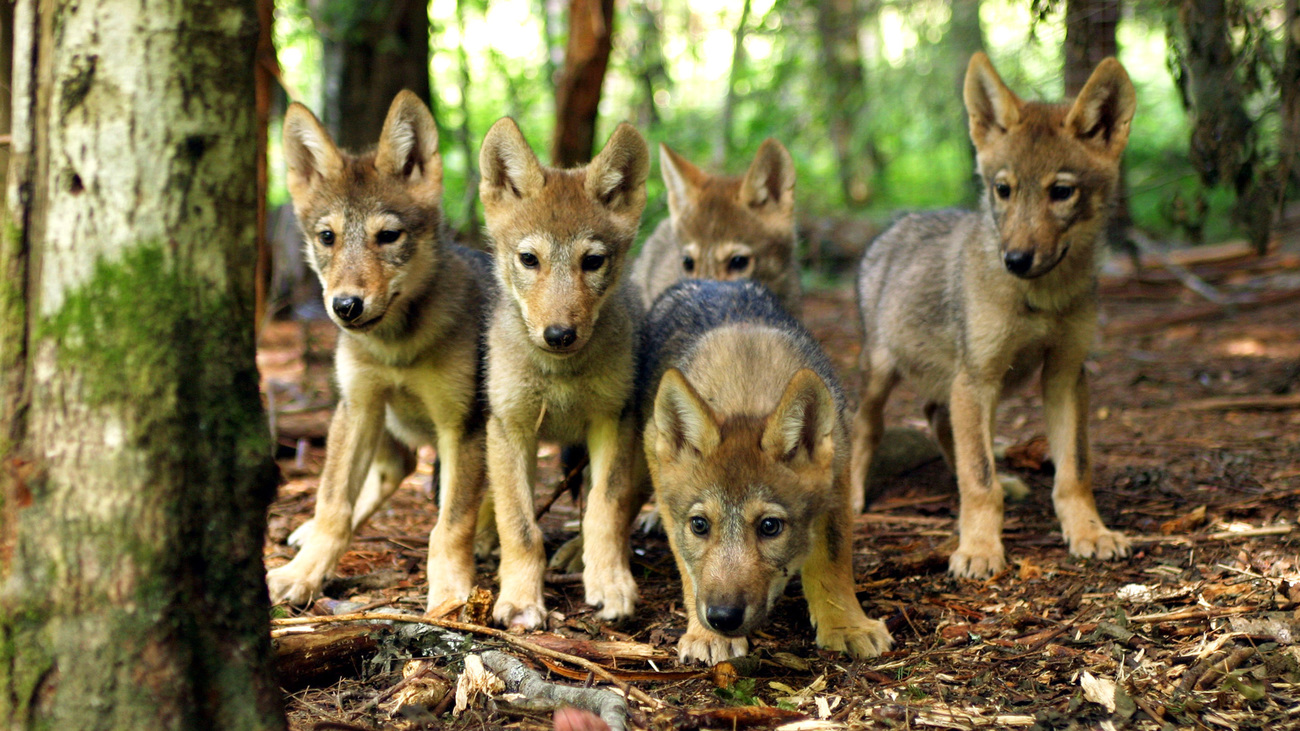
5. Wolves mate for life
Grey wolves typically mate for life. A breeding pair of wolves leads a pack of their offspring, who stick with them for about one to three years.
As a breeding pair, these wolves are in charge of the pack and determine where the pack hunts and who gets to eat first.
If one wolf of a breeding pair dies, only then will the other wolf will seek a new mate. The breeding pair stays close together most of the time—one researcher found that in more than 70% of GPS readings tracking wolf pairs, the two wolves remained within 100 metres of each other.
Wolves typically breed once a year, the timing of which depends on where they live. After a denning period, the wolf pair carries their puppies to a new area, typically near a carcass off of which they can feed.
6. Wolves may have the largest natural range of any living terrestrial mammal
Except for humans, it is thought that wolves may have the most widespread historic range of any living wild land mammal; however, this idea is sometimes disputed. This is a testament to their adaptability and resilience across diverse environments. However, this does not mean that wolves aren’t under serious threat. In many places, their range is being depleted by human activity.
Wolves are found in the US, Canada, Mexico, Greenland, North Africa, and all across Europe, into northern Asia. They can thrive in frosty tundra, on rocky mountain peaks, among inland wetlands, and in moderate deserts. The only habitats in which wolves are not found are tropical forests and particularly arid deserts.
They have adapted to these varied habitats over time: wolves in colder climates develop thicker fur to insulate against harsh winters, while those in more temperate regions may have lighter coats.
Wolf packs need a lot of space to survive, to ensure they have enough prey. They often travel long distances, covering ranges of up to 50 kilometres (30 miles) per day. In the US, grey wolf territories can be as large as 1,600 square kilometres (1,000 square miles).
7. Wolves have lost nearly a third of their natural range
Wolves around the world have lost a significant portion of their natural habitat because of human activities. The grey wolf was once the most widely distributed mammal on Earth, but persecution by humans and habitat destruction have reduced its range by about one-third.
A number of grey wolf subspecies have become extinct, including the Florida black wolf, the Great Plains wolf, the Mississippi Valley wolf, and the Texas wolf, as well as Old World subspecies such as the Japanese wolf, the Hokkaido wolf, and the Sicilian wolf.
8. Wolves don’t really howl at the moon
While many stereotypes about wolves are true—like their loyalty to their packs—one popular one is a misconception. Wolves aren’t actually known to howl at the moon.
Howling is still an important part of their communication, though, allowing them to maintain contact with their pack and other wild wolves even when separated by long distances. Wolves can hear howls from as far as 16 kilometres (10 miles) away. Each wolf has a distinct howl used to defend territory, locate pack members, and convey messages.
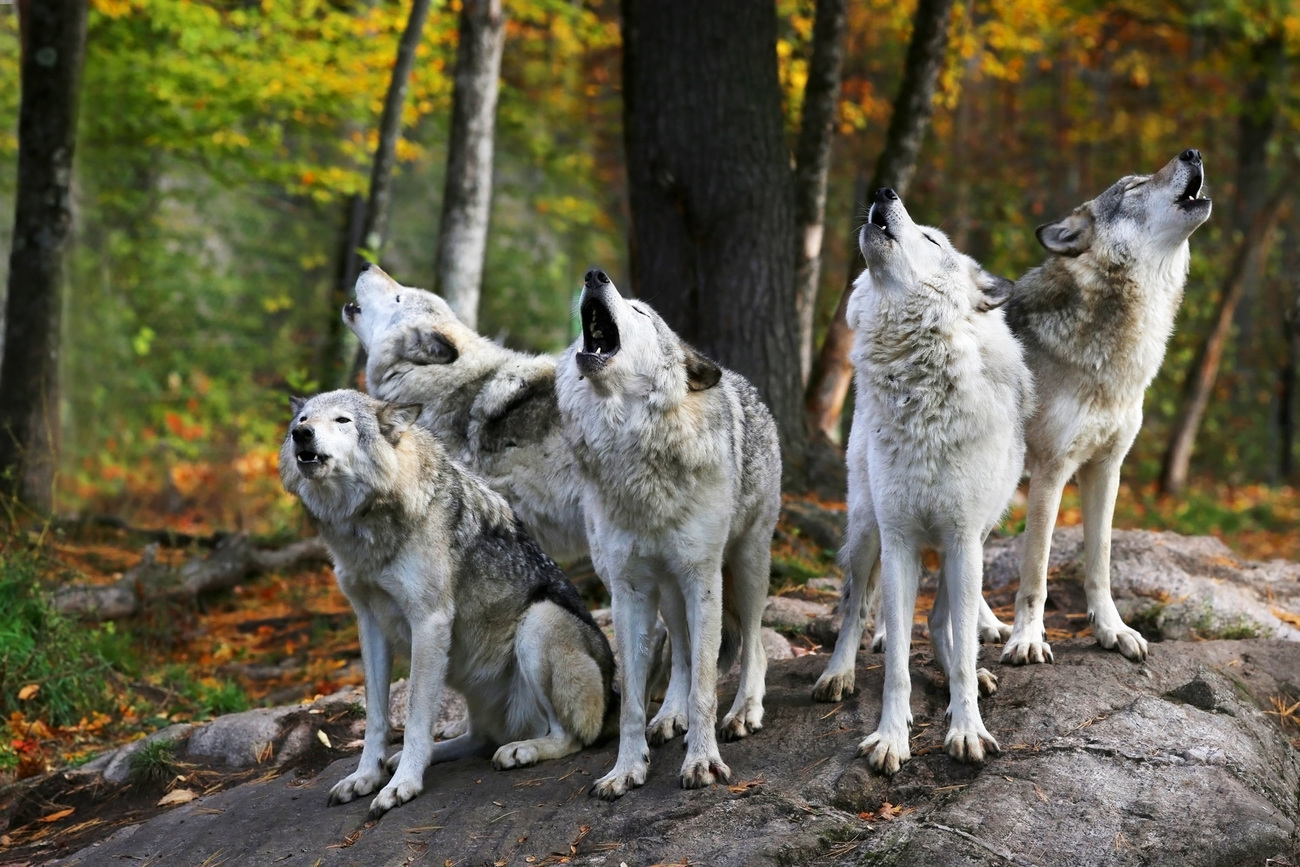
9. Wolves are apex predators
Wolves are at the top of the food chain, facing no natural predators of their own. As skilled hunters, they often prey on hoofed animals like deer, moose, and elk. By working together with their packs, wolves are able to launch coordinated attacks and ambush their prey with ease.
Wolves and their hunting habits are crucial to the survival of their ecosystems and are necessary to regulate the populations of other species. In the 1920s, wolves were eradicated from Yellowstone National Park—and were eliminated from U.S. landscapes altogether soon after that—because they were perceived as threats to livestock and game animals, while their ecological importance was ignored.
With their natural predators extirpated, elk and other ungulates were grazing on vegetation quicker than it had time to regenerate, which led to a decline in plant species diversity, erosion control, and overall ecosystem health. Because of the decline in plant species, other animals, like birds and beavers, were suddenly faced with rapid habitat loss. With fewer trees and plants to stabilise the soil, erosion increased along riverbanks, impacting fish and other aquatic species as well.
The reintroduction of wolves into Yellowstone in the 1990s resulted in the successful regrowth of plant life and the return of animal species.
10. Wolves are excellent hunters
Wolves are exceptional hunters, due to a combination of physical strength, high intelligence, and established social strategies.
Wolves hunt in packs, coordinating their efforts and sometimes tackling prey much larger than themselves. Each wolf takes on a different role in a hunt—some act as chasers to drive the prey towards other pack members, while others lie in ambush or flank the prey animal to cut off escape routes.
They’re strong animals with stamina that allows them to chase prey over long distances, at speeds up to 61 kilometres per hour (38 miles per hour). Wolves have powerful jaws, which they use to take down their kill, with a crushing power of nearly 680 kilograms (1,500 pounds) per square inch. Once they’ve successfully taken down their target, an adult wolf can consume as much as nine kilograms (20 pounds) in one feeding.
11. Humans are wolves’ biggest predator
As apex predators, there are no species above wolves that prey upon them. The biggest threat they face is from humans.
Historically, wolves have been hunted for sport, for their fur, and as perceived threats to livestock and game. This has led to significant declines in wolf populations and, in some areas, their complete eradication. Anti-wildlife policies continue to threaten wolves around the world.
Habitat destruction has also posed a significant threat to wolves. Conservation efforts are essential to help manage human impacts and ensure the survival of wolf populations in the wild.
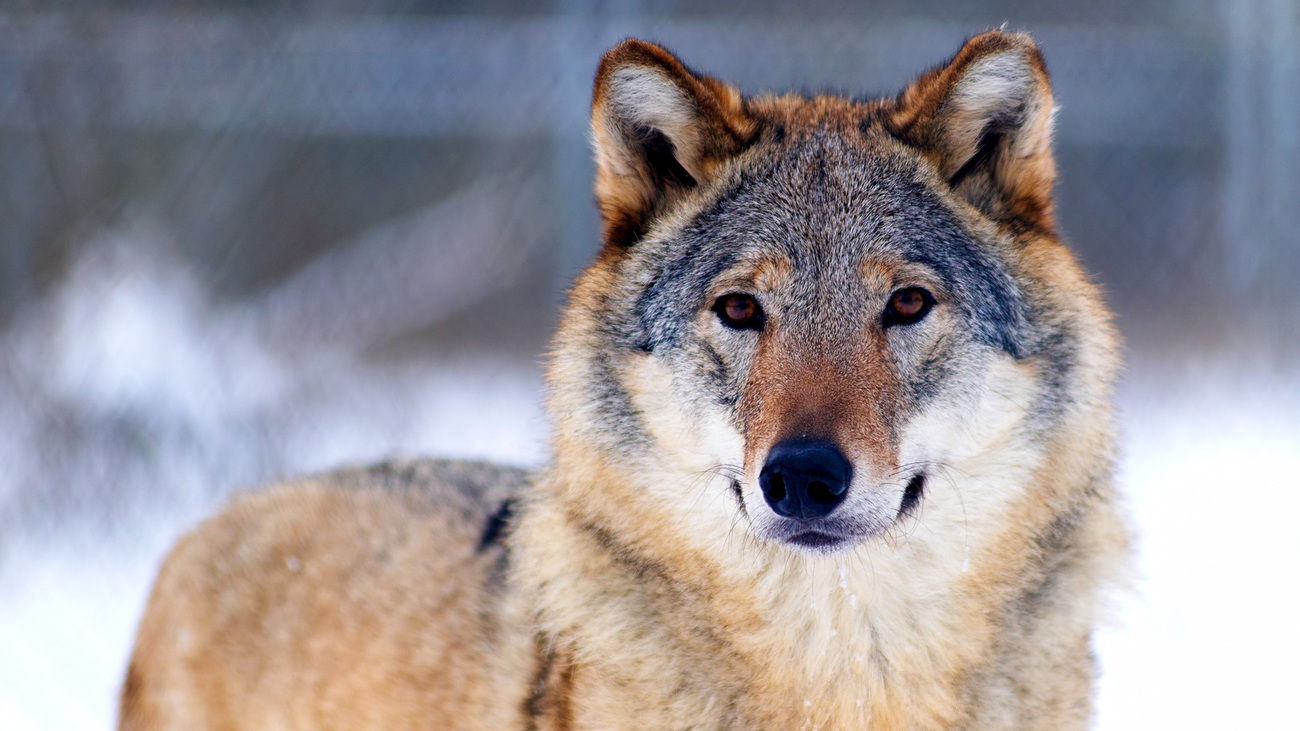
12. Wolves are the largest Canidae species
Wolves are the largest member of the Canidae family, a group of mammals in the order Carnivora that also includes coyotes, foxes, jackals, dingoes, and other wild dogs.
They’re certainly bigger than your average pet dog. Though the size depends on the subspecies, a typical northern male wolf stands about 76 centimetres (30 inches) tall at the shoulder. The weight of a male wolf can range from 14 to 65 kilograms (31 to 143 pounds) depending on where they live and what subspecies they are. Female wolves are typically about 20% smaller than male wolves.
The largest wolves live in west-central Canada, Alaska, and northern Asia. The smallest wolves live in the southernmost parts of their range, including in the Middle East and India.
13. Wolves were the first animals to be placed on the US Endangered Species Act list in 1973
Today, wolves are classified as a species of least concern by the IUCN, as they’ve had a relatively stable population since 1996, despite the serious threats they face in many regions. They have been previously classed as a vulnerable species, due to large-scale habitat loss that came as a result of settlers clearing woodland for cities and farms. Wolves have also suffered population loss as a result of predator killing programmes that aimed to eliminate perceived threats to livestock.
Though they’re listed as least concern as an entire species, some wolf subspecies are more threatened than others. The Himalayan wolf, for instance, is classed as vulnerable.
14. Not all grey wolves are grey
Despite their name, grey wolves come in a variety of colours, including grey, black, tan, or white. Their coats are typically a mix of different colours, and they tend to have lighter facial markings and undersides.
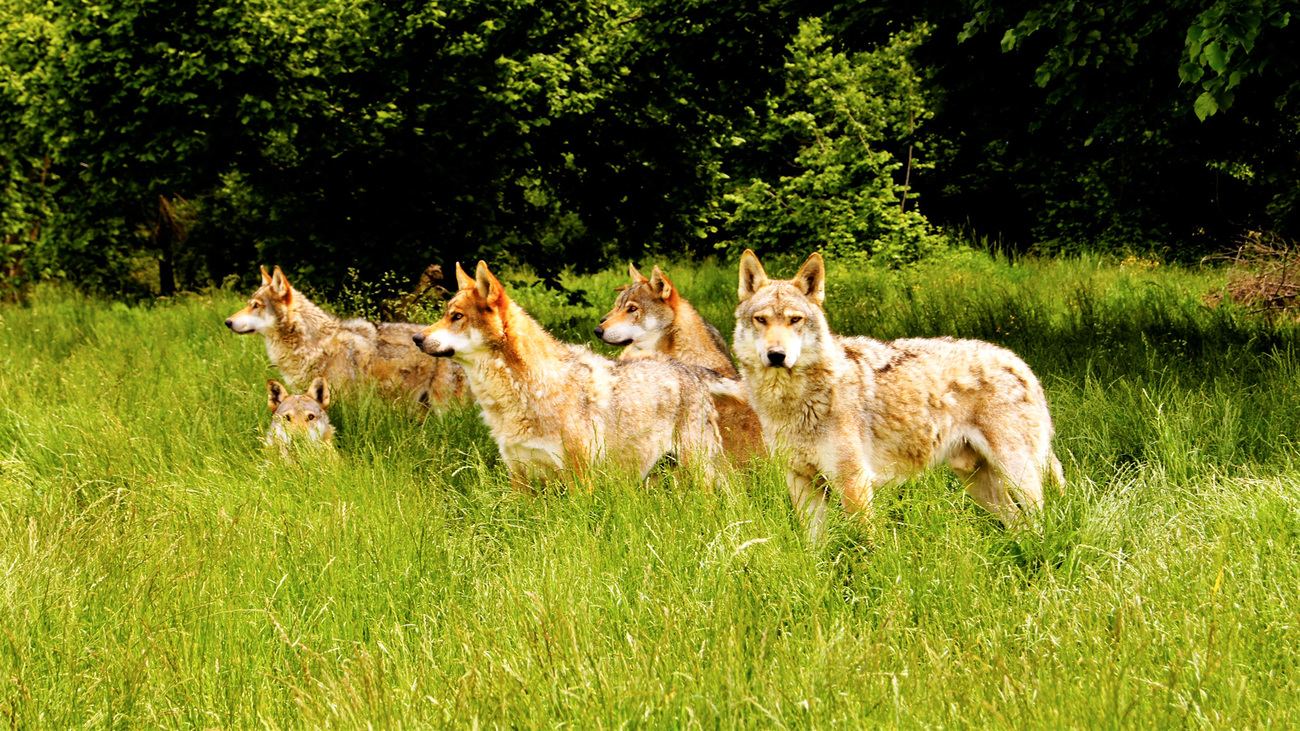
15. Wolves need our help
Wolves play a vital role in maintaining the health and balance of ecosystems. But their population is under constant threat from humans. Along with ongoing habitat loss, wolves are often poisoned, captured in cruel traps, and shot by farmers to prevent their domesticated animals from being harmed. This has had a detrimental effect on wolf numbers and entire ecosystems.
To protect wolves, we must advocate for and implement more humane and effective coexistence measures, such as non-lethal deterrents. Supporting conservation initiatives, stricter legal protections, and public education can help reduce harm to wolves.
IFAW supports legislation in the US and Canada to end the use of poisons against wolves and other vulnerable species. In March 2024, our efforts in Canada proved effective as the country announced it would end the use of strychnine to kill wolves, bears, and coyotes.
IFAW also supports the rescue of animals in need around the world, including wolves. Two wolves kept in captivity in Ukraine, Dora and Venera, needed help when the war began and their owners could no longer care for them. These wolves were cared for by our partner Wild Animal Rescue from April and November 2023 until February 2024, when they found a new home at the Arcturos Environmental Centre and Bear Sanctuary in Greece.
Supporters like you help us continue our lifesaving work not just for wolves, but for so many other threatened animals around the globe.
Related content
Our work can’t get done without you. Please give what you can to help animals thrive.